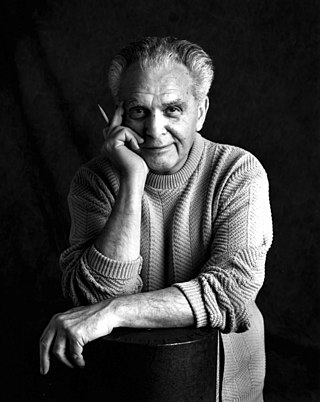
Jack Kirby was an American comic book artist, widely regarded as one of the medium's major innovators and one of its most prolific and influential creators. He grew up in New York City and learned to draw cartoon figures by tracing characters from comic strips and editorial cartoons. He entered the nascent comics industry in the 1930s, drawing various comics features under different pen names, including Jack Curtiss, before settling on Jack Kirby. In 1940, he and writer-editor Joe Simon created the highly successful superhero character Captain America for Timely Comics, predecessor of Marvel Comics. During the 1940s, Kirby regularly teamed with Simon, creating numerous characters for that company and for National Comics Publications, later to become DC Comics.

"Fourth World" is a metaseries of connected comic book titles written and drawn by Jack Kirby and published by DC Comics from 1970 to 1973. Although they were not marketed under this title until the August–September 1971 issues of New Gods and Forever People, the terms Fourth World and Jack Kirby's Fourth World have gained usage in the years since. Kirby created the Fourth World concept in the 1970s. The series is a science-fiction based mythology that revolves around ancient space deities known as the New Gods. The New Gods are similar to the gods of Earth lore.

Mark Stephen Evanier is an American comic book and television writer, known for his work on the animated TV series Garfield and Friends and on the comic book Groo the Wanderer. He is also known for his columns and blog News from ME, and for his work as a historian and biographer of the comics industry, such as his award-winning Jack Kirby biography, Kirby: King of Comics.

Joseph Henry Simon was an American comic book writer, artist, editor, and publisher. Simon created or co-created many important characters in the 1930s–1940s Golden Age of Comic Books and served as the first editor of Timely Comics, the company that would evolve into Marvel Comics.

James F. Steranko is an American graphic artist, comic book writer/artist, comics historian, magician, publisher and film production illustrator.
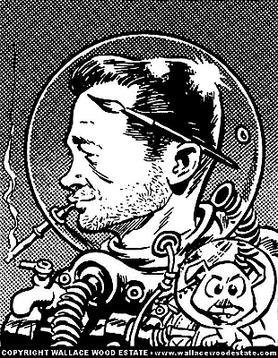
Wallace Allan Wood was an American comic book writer, artist and independent publisher, widely known for his work on EC Comics's titles such as Weird Science, Weird Fantasy, and MAD Magazine from its inception in 1952 until 1964, as well as for T.H.U.N.D.E.R. Agents, and work for Warren Publishing's Creepy. He drew a few early issues of Marvel's Daredevil and established the title character's distinctive red costume. Wood created and owned the long-running characters Sally Forth and Cannon.
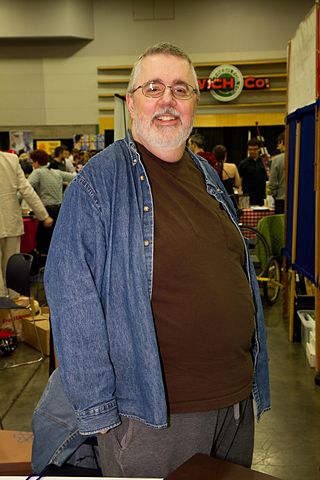
Kurt Busiek is an American comic book writer. His work includes the Marvels limited series, his own series titled Astro City, a four-year run on The Avengers, Thunderbolts and Superman.
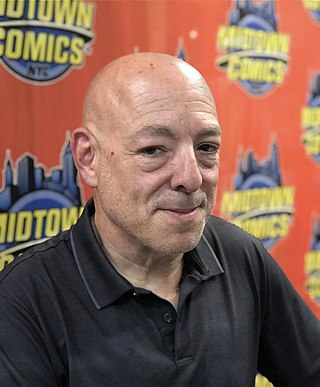
Brian Michael Bendis is an American comic book writer and artist.

Nelson Alexander Ross is an American comic book writer and artist known primarily for his painted interiors, covers, and design work. He first became known with the 1994 miniseries Marvels, on which he collaborated with writer Kurt Busiek for Marvel Comics. He has since done a variety of projects for both Marvel and DC Comics, such as the 1996 miniseries Kingdom Come, which he also cowrote. Since then he has done covers and character designs for Busiek's series Astro City, and various projects for Dynamite Entertainment. His feature film work includes concept and narrative art for Spider-Man (2002) and Spider-Man 2 (2004), and DVD packaging art for the M. Night Shyamalan film Unbreakable (2000). He has done covers for TV Guide, promotional artwork for the Academy Awards, posters and packaging design for video games, and his renditions of superheroes have been merchandised as action figures.

Stephen Ross Gerber was an American comic book writer and creator of the satiric Marvel Comics character Howard the Duck. Other works include Man-Thing, Omega the Unknown,Marvel Spotlight: "Son of Satan", The Defenders,Marvel Presents: "Guardians of the Galaxy", Daredevil and Foolkiller. Gerber often included lengthy text pages in the midst of comic book stories, such as in his graphic novel, Stewart the Rat. Gerber was posthumously inducted into the Will Eisner Comic Book Hall of Fame in 2010.

Philip Craig Russell is an American comics artist, writer, and illustrator. His work has won multiple Harvey and Eisner Awards. Russell was the first mainstream comic book creator to come out as openly gay.

Alfonso Williamson was an American cartoonist, comic book artist and illustrator specializing in adventure, Western, science fiction and fantasy.
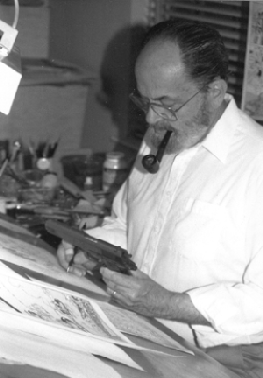
John Powers Severin was an American comics artist noted for his distinctive work with EC Comics, primarily on the war comics Two-Fisted Tales and Frontline Combat; for Marvel Comics, especially its war and Western comics; and for his 45-year stint with the satiric magazine Cracked. He was one of the founding cartoonists of Mad in 1952.

Vincent Colletta was an American comic book artist and art director best known as one of Jack Kirby's frequent inkers during the 1950s-1960s period called the Silver Age of comic books. This included some significant early issues of Marvel Comics' Fantastic Four, and a long, celebrated run on the character Thor in Journey into Mystery and The Mighty Thor.
A script is a document describing the narrative and dialogue of a comic book in detail. It is the comic book equivalent of a television program teleplay or a film screenplay.
"Charles Nicholas" is the pseudonymous house name of three early creators of American comic books for the Fox Feature Syndicate and Fox Comics: Chuck Cuidera (1915–2001), Jack Kirby (1917–1994), and Charles Wojtkoski (1921–1985). The name originated at Eisner & Iger, one of the first comic book packagers that created comics on demand for publishers entering the new medium during the 1930s–1940s Golden Age of comic books. The three creators are listed in order of birth year, below.

DC Graphic Novel is a line of graphic novel trade paperbacks published from 1983 to 1986 by DC Comics.
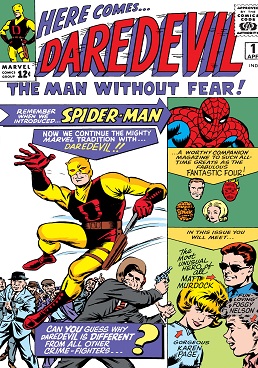
Daredevil is the name of several comic book titles featuring the character Daredevil and published by Marvel Comics, beginning with the original Daredevil comic book series which debuted in 1964.
Street Code is both the short, ten page autobiographical comic story and the 2009 mini-comic by American writer-artist Jack Kirby. Both Bill Sienkiewicz and Jeff Zapata consider it among Kirby's greatest works, and it supplanted all other works in the minds of Jack and wife Roz. Roz appreciated it so much she framed the two-page spread from the story and gave it pride of place on her wall. It was commissioned by Richard Kyle in 1983 but did not see print until 1990 in Argosy vol.3 #2, with lettering by Bill Spicer. The story was shot from Kirby's pencils. Kyle intended to print it with a colored tone behind it, which Kirby requested not be too colorful, but rather drab to suit the times. Kyle said
"I was troubled by the production errors in "Street Code", ... I should have served Jack better. But, although a hundred comic editors could have asked for this story at any time in Jack's career, they never did. "Street Code" lives because of Argosy, and will be remembered because of Jack Kirby - and because it says what the graphic story could have been and may still become."

















